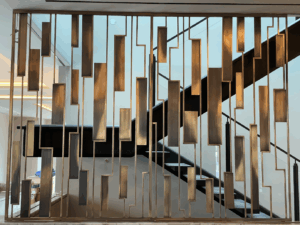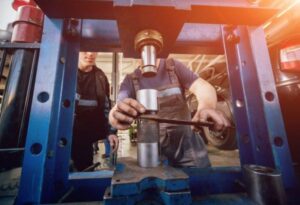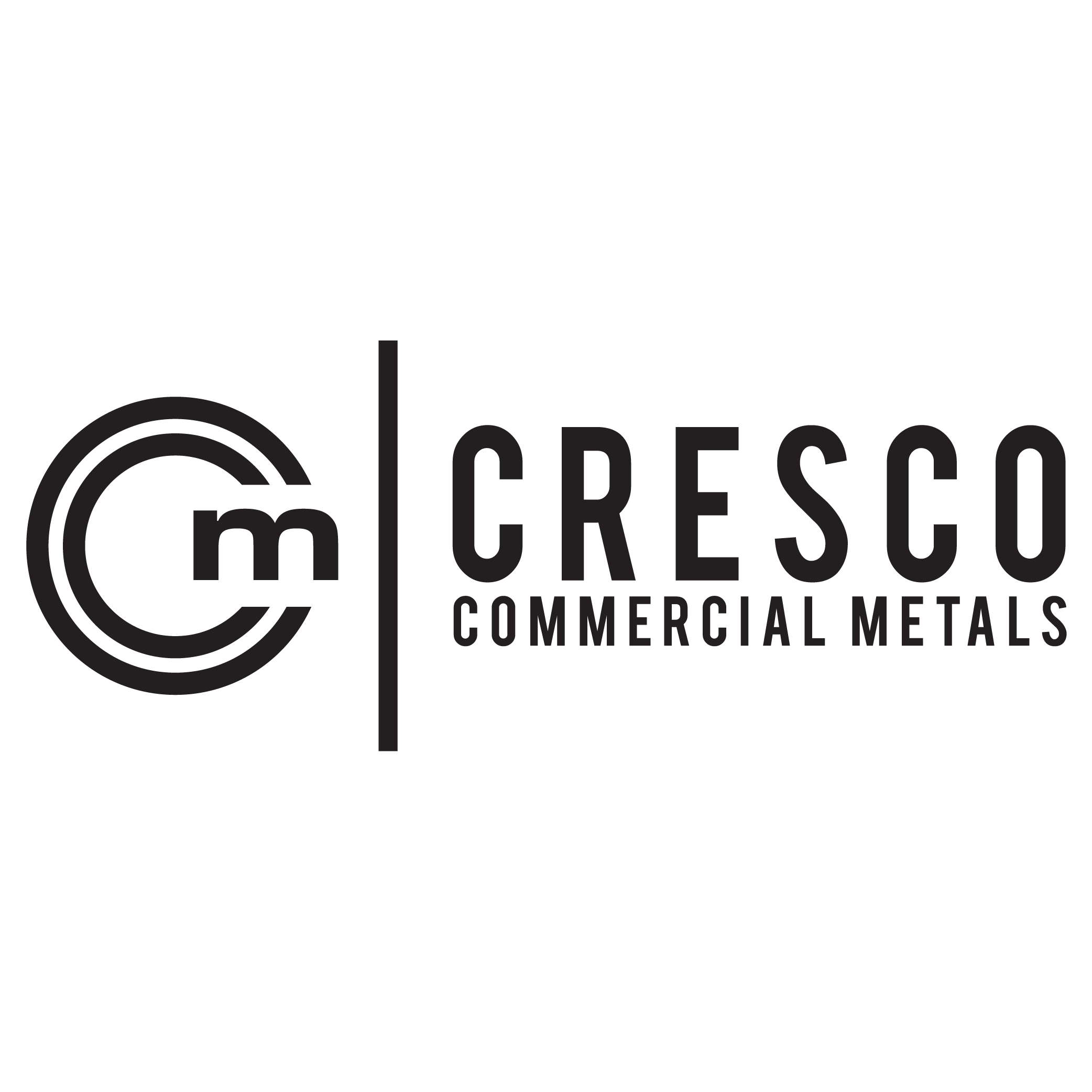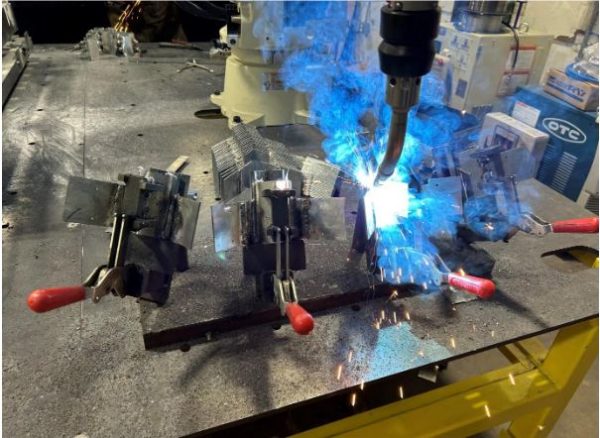The Evolution of Decorative Metal Fabrication
Decorative metal fabrication has held a strong position in industrial and architectural design throughout history. From complicated iron railings in historical buildings to modern laser-cut metal panels adorning modern facades, decorative metal fabrication has its signature everywhere. The science and art of shaping metal for decorative reasons have consistently evolved with culture, trends, and design technology. Cresco takes pride in continuing this legacy through a combination of craftsmanship and innovation, and providing clients with the service of custom metal fabrication.

In this blog, we will understand the origins of decorative metal fabrication, the evolution of different techniques with time and how modern technology continues to shape its timeless craft.
The Origins of Decorative Metal Fabrication
The roots of decorative metalwork trace back thousands of years. A few of the earliest examples can be found in ancient Egypt and Mesopotamia. Artisans used different primitive tools to shape gold, bronze, and copper into ornamental objects, architectural features, and weapons. These societies were well aware of the utility of metal as well as its aesthetic appeal.
The Romans and Greeks expanded the use of decorative metals in architecture. Ironwork grilles (use of wrought iron), sculpted metal elements, and bronze doors became common in public buildings and temples. Meanwhile, the Roman Empire was also known for advanced techniques for example, engraving and casting, allowing more consistent and detailed designs.
During the Middle Ages, decorative metalwork reached new heights in Gothic cathedrals across Europe. Wrought iron gates, candleholders, and railings featured elaborate scrolls as well as patterns, reflecting both artistic expression and religious symbolism.
Renaissance and Industrial Advancements
The Renaissance introduced a revival in art as well as craftsmanship, influencing metal fabrication companies to adopt more symmetrical and refined designs. Technologies like repousse (shaping metal through hammering from the reverse side) and chasing (engraving on the front side) became more sophisticated, enabling artisans to make detailed embellishments and reliefs.
During the forefront of the industrial revolution in 18th and 19th centuries, metal fabricators experienced a significant and dramatic transformation. The invention of new machinery enabled mass production and higher precision. Decorative elements that once took longer to forge by hand could now be stamped, rolled out, or cut in large quantities.
Cast iron became a famous material during this time, especially for public architecture. It allowed the making of ornamental facades, street lamps, and balcony railings at a scale and consistency traditionally impossible. Different buildings constructed during the 19th century still exhibit these enduring elements today.
Contemporary Decorative Metal Fabrication Techniques
Currently, decorative metal fabrication is a fusion of conventional craftsmanship and cutting-edge technology. While a few techniques have remained essentially unchanged, others are evolving remarkably with the development of new tools and digital fabrication methods.
- CNC machining and laser cutting
Computer Numerical Control (CNC) machining, as well as laser cutting, has revolutionized decorative metalwork. These techniques allow repeatable, precise, and intricate designs on metals, for example, brass, copper, steel, and aluminum. With the laser cutting technique, fabricators can make highly detailed patterns, architectural screens, and logos with high accuracy.
- Waterjet cutting
Waterjet cutting utilizes high-pressure water mixed with abrasive materials to slice through metal without creating heat. This technique is perfect for intricate designs and thick materials, as heat can cause discoloration or warping.

- Welding as well as finishing
Modern welding techniques like MIG welding or Metal Inert Gas welding or TIG (Tungsten Inert Gas) provide strong, clean joins for decorative metalwork. Finishing technologies, such as patination, polishing, anodizing, and coating, enable a wide variety of colors and textures, enhancing both aesthetic appeal and durability.
- 3D metal printing
The field is still emerging, with technologies like additive manufacturing offering exciting possibilities for decorative applications. Designers and artists can now create complex, organic shapes that would be impossible or difficult to make with conventional fabrication methods.
Materials Used in Decorative Metal Fabrication
The selection of materials plays a vital role in both the visual appeal and the longevity of decorative metalwork. A few commonly used metals are –
- Stainless steel: Corrosion-resistant, durable, and perfect for modern aesthetics.
- Aluminum: Versatile and lightweight, usually used for facades and panels.
- Copper and Brass: Known for the warm tones as well as patina over time, famous in both classic and contemporary designs.
- Wrought iron: Conventional as well as ornamental, usually used in railings, balconies and gates.
- Corten steel: the weathering steel that develops a rust-like appearance, usually used in outdoor sculptures as well as architectural panels.
Applications of Decorative Metal Fabrication
Decorative metal fabrication is utilized in a wide range of applications across various industries:
- Architecture: Cladding, facades, privacy screens, signage, and railing systems.
- Interior designs: Wall art, staircases, cabinetry hardware, and light fixtures.
- Hospitality and retail: Bar fronts, custom-branded elements, signage, and display fixtures.
- Public art and installations: urban design features, monument,s and sculptures.
FAQs
- What is decorative metal fabrication used for?
To create aesthetically pleasing components, including facades, railings, furniture, signage, and sculptures, decorative metal fabrication is used in public art, architecture, and interior design. It blends structural stability with beauty.
- Which metals are most commonly used for decorative purposes?
Stainless steel, aluminum, copper, brass, and wrought iron are examples of common metals. Every metal has distinct qualities, such as strength, appearance, and corrosion resistance.
- How does laser cutting improve decorative metalwork?
For decorative screens, panels, and signage, laser cutting makes it possible to create incredibly detailed and exact patterns on metal surfaces. It improves accuracy and decreases waste.
- Is decorative metalwork environmentally friendly?
Indeed. Modern fabrication techniques can reduce waste, and many metals are recyclable. Additionally, using sturdy, high-quality materials prolongs the product’s life and lowers the need for replacement.


